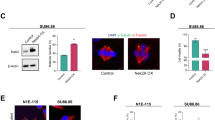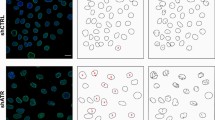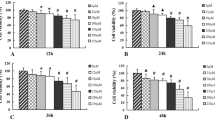Abstract
Multinucleated cells resulted from mitosis defect have been noted in pathophysiological states of the cells such as inflammation, senescence and cancer. Since oxidative stress has been known to correlate with these pathophysiological conditions, we tested the effect of H2O2 on the cell cycle progression and formation of multinucleated cells. H2O2 induced a significant delay in cell cycle progression in Chang liver cells. Interestingly, H2O2 actively induced hyperamplification of centrosomes (> or =3) and multipolar spindle formation during mitosis and subsequently increased the generation of multinucleated cells. A significant increase of the phospho-ERK level was observed upon H2O2 treatment but PD98059, an MEK1/2 inhibitor, didn't reduce the frequency of cells with hyperamplified centrosomes. On the other hand, treatment of either H2O2 or adriamycin increased intracellular ROS levels and multinucleated cells, which were significantly suppressed by antioxidants, N-acetylcysteine and PDTC. Thus, our results suggest that oxidative stress can trigger centrosome hyperamplification and multinucleated cell formation, which may promote pathophysiological progression.
Similar content being viewed by others
Article PDF
Author information
Authors and Affiliations
Rights and permissions
This is an Open Access article distributed under the terms of the Creative Commons Attribution Non-Commercial License (http://creativecommons.org/licenses/by-nc/3.0/) which permits unrestricted non-commercial use, distribution, and reproduction in any medium, provided the original work is properly cited.
About this article
Cite this article
Chae, S., Yun, C., Um, H. et al. Centrosome amplification and multinuclear phenotypes are Induced by hydrogen peroxide. Exp Mol Med 37, 482–487 (2005). https://doi.org/10.1038/emm.2005.59
Published:
Issue date:
DOI: https://doi.org/10.1038/emm.2005.59
Keywords
This article is cited by
-
Tryptone-stabilized gold nanoparticles induce unipolar clustering of supernumerary centrosomes and G1 arrest in triple-negative breast cancer cells
Scientific Reports (2019)
-
Global gene expression profiling and senescence biomarker analysis of hESC exposed to H2O2 induced non-cytotoxic oxidative stress
Stem Cell Research & Therapy (2017)
-
Silica nanoparticles induce multinucleation through activation of PI3K/Akt/GSK-3β pathway and downregulation of chromosomal passenger proteins in L-02 cells
Journal of Nanoparticle Research (2016)
-
Mustard gas surrogate, 2-chloroethyl ethylsulfide (2-CEES), induces centrosome amplification and aneuploidy in human and mouse cells
Cell Biology and Toxicology (2014)
-
A potential role for NEDD1 and the centrosome in senescence of mouse embryonic fibroblasts
Cell Death & Disease (2010)



